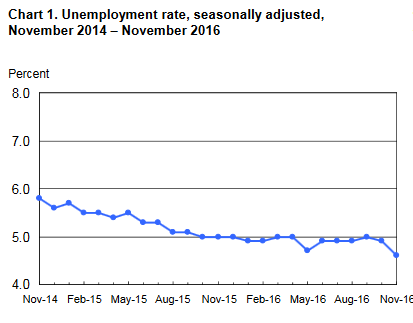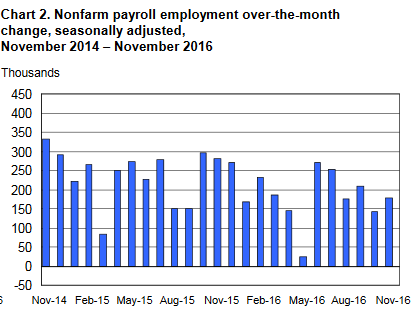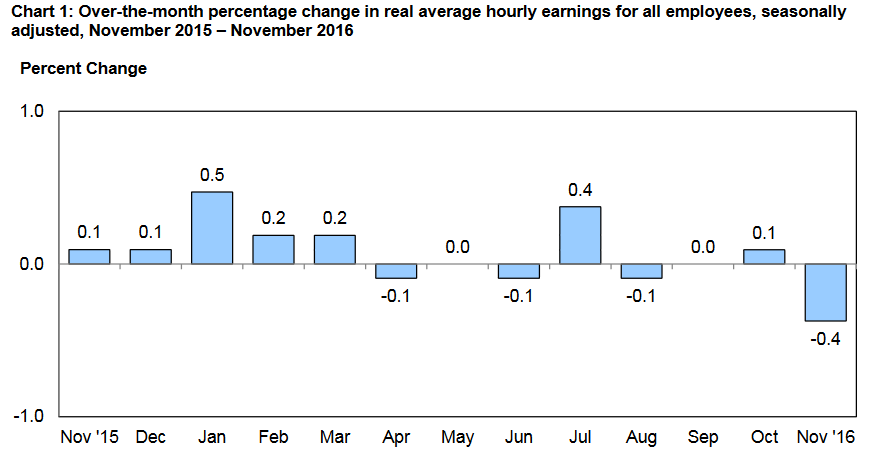Employment Blog December 2016
This report is from the Bureau of Labor Statistics, U S Labor Department. The unemployment rate declined by 0.3 percentage point to 4.6 percent in November, and nonfarm payroll employment increased by 178,000. Job growth continued in professional and business services and in health care. Thus far this year, nonfarm job growth has averaged 180,000 per month, compared with an average gain of 229,000 per month in 2015. Incorporating revisions for September and October, which reduced nonfarm payroll employment by 2,000 on net, monthly job gains have averaged 176,000 over the past 3 months. These trends are detailed in Charts 1 and 2 below.
Employment in professional and business services increased by 63,000 in November and has expanded by 571,000 over the year. Within the industry, accounting and bookkeeping services added 18,000 jobs over the month. Employment continued to trend up in administrative and support services (+36,000), computer systems design and related services (+5,000), and management and technical consulting services (+4,000).
Health care employment rose by 28,000 in November, with a gain of 22,000 in ambulatory health care services. Health care has added 407,000 jobs over the year.
Employment in construction continued on its recent upward trend in November (+19,000), led by a gain in residential specialty trade contractors (+15,000). Over the past 3 months, construction has added 59,000 jobs, largely in residential construction.
Employment in other major industries–mining, manufacturing, wholesale trade, retail trade, transportation and warehousing, information, financial activities, leisure and hospitality, and government–changed little over the month.
Average hourly earnings of all employees on private nonfarm payrolls decreased by 3 cents in November to $25.89, following an 11-cent increase in October. Over the past 12 months, average hourly earnings have risen by 2.5 percent. From October 2015 to October 2016, the Consumer Price Index for All Urban Consumers (CPI-U) increased by 1.6 percent (on a seasonally adjusted basis).
Real average hourly earnings for all employees decreased 0.4 percent from October to November, seasonally adjusted, the U.S. Bureau of Labor Statistics reported today. This result stems from a 0.1-percent decrease in average hourly earnings being more than offset by a 0. 2-percent increase in the Consumer Price Index for All Urban Consumers (CPI-U).
Real average weekly earnings decreased 0.3 percent over the month due to the decrease in real average hourly earnings combined with no change in the average workweek. Real average hourly earnings increased 0.8 percent, seasonally adjusted, from November 2015 to November 2016. This increase in real average hourly earnings combined with a 0.3-percent decrease in the average workweek resulted in a 0.5-percent increase in real average weekly earnings over this period. These trends are detailed in Chart 1a below.



